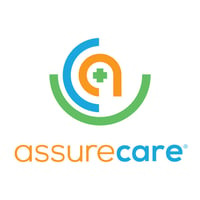
Utilization Management
Verify eligibility, optimize reviews, and streamline appeals and grievances.

Utilization Management
Verify eligibility, optimize reviews, and streamline appeals and grievances.

Care Management
Enable preventative care, manage medical interventions, and efficiently report on program outcomes.

Medication Management
Perform and bill medical services, ensure medications are safe and effective, and identify ways to improve care.

Quality Management
Improve outcomes, lower costs, and adhere to standards, such as HEDIS, Stars, and PQA.

Specialty Pharmacy

To simplify the complex medical billing process, the American Medical Association (AMA) has developed, maintained, and copyrighted Current Procedural Terminology (CPT) codes for every medical service that a licensed healthcare provider can offer. CPT codes are crucial medical identifiers that help insurers determine what type of care has been provided and what the cost will be if the claim is approved.
What are CPT Codes?
CPT codes, also known as service codes, are five-digit numeric and alphanumeric modifiers that identify each task or service a healthcare provider offers. These codes are used by both providers and payers to communicate services rendered, billed, and paid for. The first four digits identify the specific procedure or task that was carried out while the fifth digit, an alphabetic modifier, identifies if there were any additional services provided in connection with this code. CPT codes have helped reduce billing-related disputes between healthcare providers and payers by providing a common ground for understanding the service that was provided.
As an example, CPT Code 80233 – minor office/outpatient visit includes history and examination while CPT Code 80233 with modifier -25 (office/outpatient visit for evaluation and management of a new patient) signifies a new patient who has not been seen by any other physician at this practice or elsewhere.
Types of CPT Codes:
How to Find a CPT Code?
American Medical Association’s (AMA) website provides an online search tool for CPT codes. Inputting the list of services provided prompts the tool to deliver the CPT code for that service. CPT codes are updated every year by the American Medical Association (AMA) in collaboration with other medical specialty societies. The updates help reflect changes in technology, services, and procedures that have taken place over the past year.
Alternatively, Electronic Health Record (EHR) software has the ability to select appropriate CPT codes when billing patients. EHRs have drop-down menus that list all the CPT codes and their descriptions for each service offered by a provider.
It is also recommended to hire professional medical coders or coding services to correctly bill for services rendered. Medical coders use CPT, HCPCS Level II, and ICD-CM codes to assign codes correctly.
How to Submit the CPT Code?
If your office staff is using paper forms, then the CPT codebook must be used to find the right code. If your practice utilizes an EHR, such as iPatientCare, then the software should automatically populate the CPT codes as you type in descriptors of each service on the visit note screen. Always review all the information before submission. It is important to note that the billing process may vary from one healthcare setting to another.
Submission: Healthcare providers or staff generally submit the medical documentation to the coding staff at the billing service. They review the documentation, assign CPT and other codes, and forward the claim to the appropriate insurance company.
Verification: The insurance company reviews the claim and responses, which is called remittance advice. The advice informs the provider of what services are covered, the amount that will be paid, and other information related to the payment of the claim.
Claim Processing: Once the verification is confirmed, the insurance company will process the claim and initiate the payment process.
Preventing Incorrect Coding
CPT coding is a complex process that requires experienced medical coders. It is vital to stay up to date with the latest CPT codes and changes to ensure a smooth billing process. Take the time to review each bill carefully and compare it to your medical records. If you find any discrepancies, don’t hesitate to reach out to the billing department and ask for an explanation.
Common mistakes include:
Medical billing is a complex process; iPatientCare offers a comprehensive and user-friendly EHR and Revenue Cycle Management solution that can help your practice streamline its coding and billing process. Our team manages all aspects of provider billing from claim submission to denial management. If you are interested in boosting your practice’s revenue and reducing denials contact us today.

AssureCare
AssureCare® is a leading provider of integrated population care management software for healthcare and human services organizations. For nearly two decades, AssureCare has served the healthcare industry.